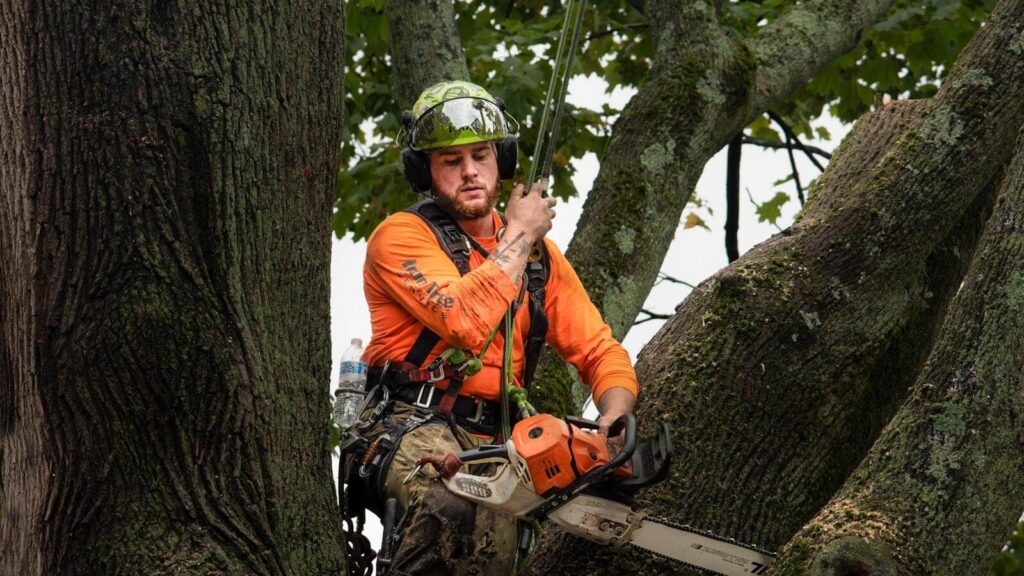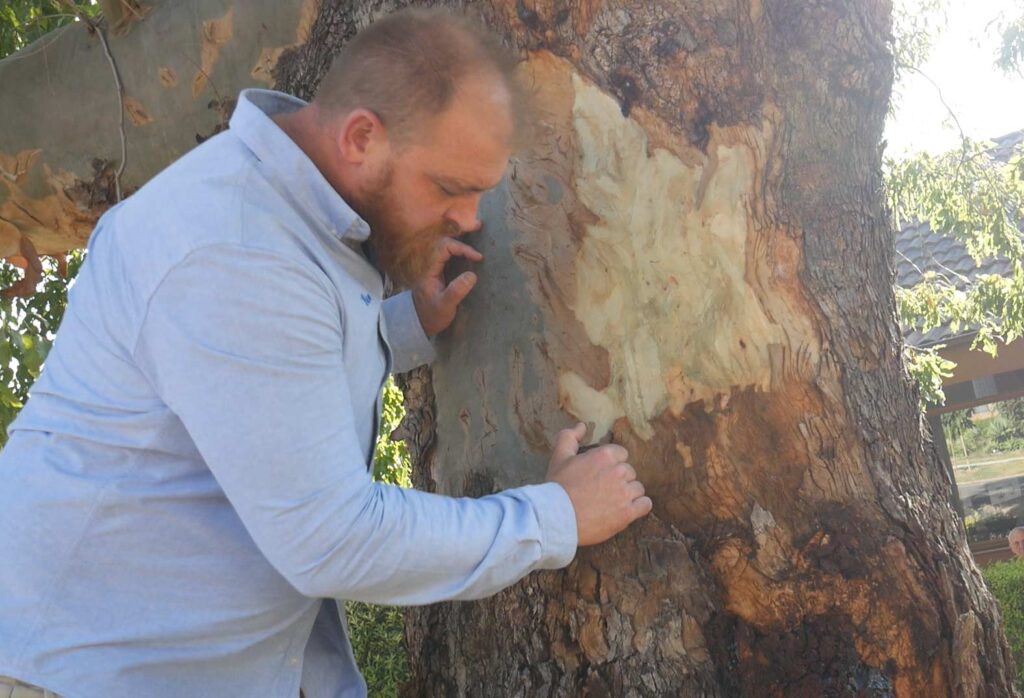Arborist reports play a crucial role in tree management and urban planning in Sydney. These comprehensive reports provide valuable information about the health and condition of trees, helping property owners and developers make informed decisions. In this article, we will delve into the importance of arborist reports, their components, the process of obtaining them, and the legal and regulatory aspects in Sydney.
Understanding the Importance of Arborist Reports
Arborist reports are vital in ensuring the well-being and longevity of trees in Sydney. They provide an assessment of tree health, structural stability, and potential hazards. These reports also help identify any necessary tree maintenance or removal to prevent any negative impact on the environment, infrastructure, or human safety.
Furthermore, arborist reports play a significant role in promoting biodiversity within urban landscapes. By evaluating the health and condition of trees, arborist can recommend specific actions to protect and enhance the ecological balance of an area. This includes suggestions for planting native tree species, creating wildlife habitats, and preserving green spaces for future generations to enjoy.
The Role of Arborist Reports in Tree Management
Arborist reports serve as a crucial tool for property owners, councils, and landscape architects in managing trees. These reports outline the current condition of trees, including their age, species, size, and overall health. This information aids in developing appropriate management strategies, such as pruning, fertilization, or tree preservation measures.
Moreover, arborist reports help in assessing the risk of tree-related incidents, such as falling branches or tree failure, thereby enabling proactive measures to mitigate potential dangers. By implementing the recommendations outlined in these reports, property owners can ensure the safety of individuals and property while preserving the natural beauty of the surrounding landscape.
See Also: HOW DO LOYALTY PROGRAMS MAKE MONEY?
How Arborist Reports Contribute to Urban Planning
Arborist reports are also instrumental in urban planning processes. They provide essential data on the existing tree canopy and its impact on the surrounding environment. This information helps urban planners make informed decisions regarding tree preservation, tree planting initiatives, and the impact of development on the local ecosystem.
Additionally, arborist reports aid in the creation of green infrastructure plans that aim to enhance the quality of life in urban areas. By assessing the ecological value of trees and green spaces, city planners can incorporate nature-based solutions into their designs, such as green roofs, urban forests, and sustainable landscaping practices. This integrated approach not only improves environmental sustainability but also promotes community well-being and resilience to climate change challenges.
The Components of an Arborist Report
An arborist report typically includes three key components: identifying information and location details, tree assessment and health evaluation, and recommendations and management plans. Let’s explore each component in detail.
Identifying Information and Location Details
The report begins with the tree’s identifying information, such as its species, common and scientific name, and unique identification number (if applicable). This information not only helps in accurately identifying the tree but also aids in maintaining a comprehensive record of the tree’s history and management. Additionally, location details, including the property address, GPS coordinates, and a clear description of the tree’s location, are provided. These details are crucial for future reference and ensure that the tree can be easily located and monitored.
Furthermore, the report may also include additional information about the tree’s surroundings. This can include details about nearby structures, such as buildings or power lines, that may impact the tree’s growth or pose potential risks. By considering the tree’s immediate environment, the arborist can provide more accurate recommendations and management plans tailored to the specific conditions of the tree’s location.

Tree Assessment and Health Evaluation
In this section, the arborist conducts a thorough examination of the tree, assessing its overall health, structural stability, and potential risks. This evaluation goes beyond a simple visual inspection and may involve various techniques and tools to gather precise data.
The arborist carefully inspects the trunk, branches, foliage, and root system of the tree, looking for any signs of damage, disease, or decay. They may use specialized tools such as resistance drilling, which measures the tree’s resistance to decay, or sonic tomography, which creates images of the tree’s internal structure. These advanced techniques provide valuable insights into the tree’s health and structural integrity, allowing the arborist to make informed recommendations.
Additionally, the arborist may conduct aerial inspections using drones or other elevated platforms to assess the tree’s canopy and identify any potential hazards, such as dead branches or weak attachments. This comprehensive evaluation ensures that all aspects of the tree’s health and safety are thoroughly examined, providing a comprehensive assessment that forms the basis for the recommendations and management plans.
Recommendations and Management Plans
Based on the tree assessment, the arborist provides practical recommendations and management plans. These recommendations are tailored to address the specific needs and conditions of the tree, ensuring its long-term health and safety.
In addition to suggestions for pruning, cabling or bracing, fertilization, or tree removal, the report may also outline long-term management strategies. These strategies can include regular monitoring and maintenance, such as periodic inspections and follow-up assessments, to track the tree’s progress and address any emerging issues promptly. The arborist may also provide guidance on tree preservation techniques or recommend suitable replacement species if a tree needs to be removed.
Furthermore, the report may include a timeline for implementing the recommended actions and estimated costs associated with each recommendation. This information helps property owners or managers plan and budget for the necessary tree care activities, ensuring that the recommendations can be effectively carried out.
The Process of Obtaining an Arborist Report in Sydney
Obtaining an arborist report in Sydney is a crucial step in ensuring the health and safety of trees on your property. Trees not only enhance the aesthetic appeal of your surroundings but also provide numerous environmental benefits. Let’s delve deeper into the process to gain a comprehensive understanding.
Before diving into the specifics of obtaining an arborist report, it’s important to recognize the significance of seeking professional help when it comes to tree care. Arborists are trained experts in the field of arboriculture, equipped with the knowledge and skills to assess the condition of trees, diagnose issues, and recommend appropriate courses of action to maintain their well-being.
Selecting a Qualified Arborist
The first step in obtaining an arborist report is selecting a qualified and experienced arborist to conduct the assessment. It is imperative to choose an arborist who possesses the necessary certifications and accreditations from reputable organizations such as the International Society of Arboriculture (ISA) or equivalent local bodies. Additionally, look for arborists with a proven track record of delivering high-quality services and recommendations.
When researching potential arborists, consider factors such as their level of experience, areas of expertise, and client testimonials. By selecting a reputable arborist, you can have confidence in the accuracy and reliability of the arborist report that will be generated.

What to Expect During the Arborist’s Visit
During the arborist’s visit to your property, you can anticipate a thorough examination of the trees in question. The arborist will employ various assessment techniques, which may include climbing the tree to inspect its structural integrity, examining the trunk, branches, and foliage for signs of disease or damage, and collecting samples for further analysis if deemed necessary.
Furthermore, the arborist may utilize tools such as resistograph drills or sonic tomography devices to assess internal decay or structural weaknesses that are not visible to the naked eye. By utilizing a combination of visual inspections and specialized equipment, the arborist can provide a comprehensive evaluation of the tree’s health and condition.
Understanding Your Arborist Report
Upon completion of the assessment, the arborist will compile their observations, findings, and recommendations into the arborist report. This document serves as a valuable resource that outlines the current state of the trees, identifies any issues or risks present, and proposes management strategies to address them effectively.
When reviewing the arborist report, pay close attention to the details provided, including the recommended tree maintenance practices, potential risks to property or safety, and timelines for implementing the suggested actions. If you require further clarification or have any questions regarding the content of the report, do not hesitate to contact the arborist for additional information.
Legal and Regulatory Aspects of Arborist Reports in Sydney
Arborist reports in Sydney are not only essential for tree management but also have legal and regulatory implications. Let’s delve into the key aspects of these reports in relation to the law and local regulations.
Arborist Reports and the Law
In Sydney, it is essential to comply with the relevant legislation and regulations when it comes to tree management. Arborist reports are often required as part of the legal documentation process for tree maintenance, removal, or development applications. Failing to submit the necessary reports can result in substantial fines or legal consequences.
When it comes to the law, arborist reports serve as a crucial piece of evidence. They provide objective and professional assessments of tree health, potential risks, and management strategies. These reports are relied upon by local authorities, property owners, and developers to make informed decisions regarding tree management and development projects.
Compliance with Sydney’s Tree Preservation Orders
Sydney has specific Tree Preservation Orders (TPOs) in place to protect significant trees and the city’s green infrastructure. Arborist reports play a crucial role in assessing the compliance of proposed actions with these TPOs. This ensures that any development or tree management activities are conducted in accordance with the local regulations.
Tree Preservation Orders are designed to safeguard the urban forest and maintain the ecological balance of Sydney. Arborist reports assist in evaluating the impact of proposed actions on the health and stability of trees, helping to preserve the city’s natural heritage. By adhering to these orders, Sydney can continue to thrive as a green and sustainable city.
Arborist Reports in Development Applications
For development applications involving significant trees, local councils often require arborist reports to assess the potential impact on the tree canopy. These reports help ensure that any proposed development plans consider the preservation of trees and their contribution to the local environment.
Arborist reports provide detailed information about the condition of trees, their structural integrity, and their overall value to the surrounding ecosystem. This information is crucial for urban planners and developers to make informed decisions about the design and layout of their projects. By incorporating the recommendations from arborist reports, developers can create sustainable and tree-friendly developments that enhance the aesthetic appeal and ecological value of the area.
In conclusion, arborist reports are a valuable tool in tree management and urban planning in Sydney. They provide essential information about tree health, potential risks, and management strategies. Understanding the importance of these reports, their components, the process of obtaining them, and the legal and regulatory aspects are crucial for property owners, developers, and urban planners in Sydney.
Related: A Complete Guide About Finding Reliable Tree Removal Near Me

